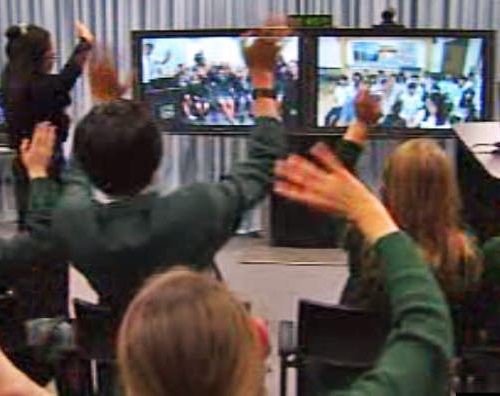High speed needs help kids connect overseas
 Year seven students in New South Wales are helping fulfil one of the Coalition’s visions for the country, using a technology they may not support.
Year seven students in New South Wales are helping fulfil one of the Coalition’s visions for the country, using a technology they may not support.
Students at 33 schools across NSW have been using the optical internet infrastructure built for the National Broadband Network to access a new level of language education – directly partnering with students in Korea via video link.
Students at Duval High School in Armadale say it is an exciting way to learn: “It's pretty nerve-wracking at the start,” one student said, “but then you get used to it.”
“We get a lot of laughs. We always say words wrong!”
“Since we've been talking to them for a while, they've become my friends and it's easier to talk to them.”
The Asia-ConneXions program has been made possible by the high-speed infrastructure of the NBN. It also helps address the massive shortage of language teachers in regional schools.
“It's fantastic for breaking down the barriers of geography and the tyranny of distance... people don't have the expense of travel,” the University of New England’s Rob Irving said.
“We need as many Australian students as possible who are learning Asian languages”, says Kurt Mullane of the Asia Education Foundation, “so that Australia as a nation is equipped to make the best the possibilities that the Asian century offers.”
Dr Myung-Sook Auh, Asia ConneXions Program Director, said it could not happen without the best equipment, after trials using Skype were unsuccessful.
“When we had failures in audio qualities and video qualities it meant student time was wasted,” Dr Auh said.








 Print
Print